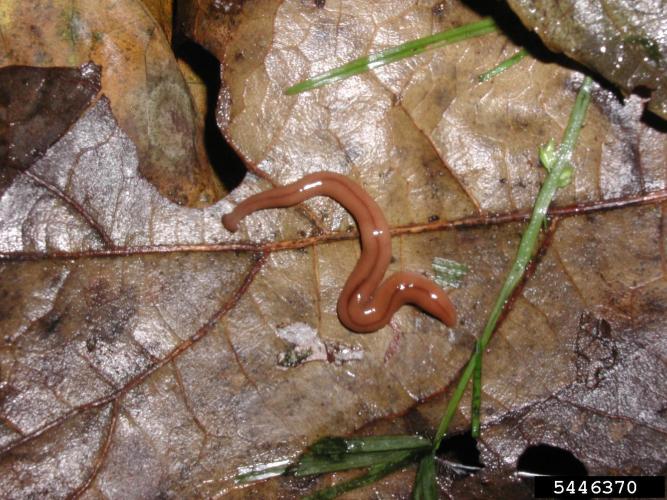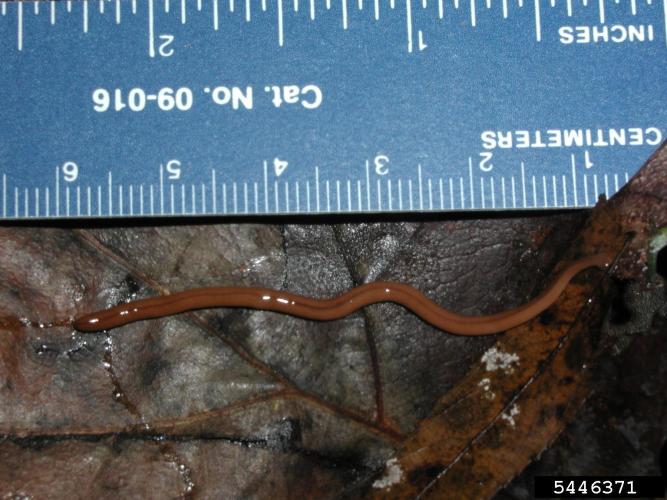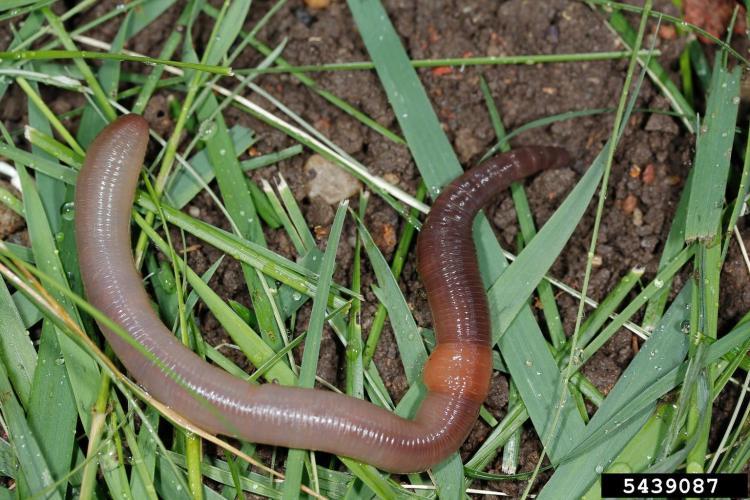Wandering Broadhead Planarian
Identification
Wandering Broadhead Planarian is a terrestrial flatworm that is 2-4 inches long. It is yellow-tan in color with one brown stripe that does not extend over the head; the underside is not striped. The head is fan-shaped and may have a brown-grey edge that fades towards the body.
Wandering Broadhead Planarians prey on earthworms, slugs, insect larvae, and can be cannibalistic. Planarians have eye-like structures called eyespots near the top of their heads. Earthworms have segments but flatworms do not.
Signs and Symptoms
A sticky mucus membrane on the lower side of the body secretes a slime helps them to move, much like a slug.
Biology
Flatworms like the Wandering Broadhead Planarian have fairly simple internal anatomy. They eat and excrete out of the same opening and they have to use that for one or the other purpose at a time. They are flat so that fluids and oxygen can diffuse through them, as they have no body cavity, no circulatory and no respiratory system.
Origin
Native to Southeast Asia. Wandering Broadhead Planarians were likely introduced to the United States from horticultural practices and trade.
Habitat
Wandering Broadhead Planarians are found in gardens and woodlands in dark, cool, moist areas, likely under objects such as rocks, logs, leaf litter and other debris. This species thrive in high temperature and humidity and has been spreading northward along the Atlantic Coast. It is able to endure freezing when in protected sites.
Life Cycle
Wandering Broadhead Planarians (Bipalium adventitium) primarily reproduce sexually with one breeding season per year. They are hermaphroditic and eggs are deposited in cocoons. Initially, the cocoon is bright red, but within 24 hours it turns black. Eggs will hatch approximately 21 days later and 1-6 juveniles are released.
Bipalium species can also reproduce by fragmentation or “binary fission” where the posterior tip will attach itself to something in the soil, and the parent worm will pull away. The fragment is able to move immediately and will develop a head within 10 days. This form of reproduction is more commonly seen in Bipalium kewense.
Planarians are more advanced flatworms and though they lack an organized respiratory and circulatory system, they have a simple digestive tract. Food goes in the same opening that waste goes out. Or in plain language, they eat and poop out of the same opening.
Ecological Threat
Bipalium species secrete a neurotoxin, Tetrodotoxin, through their skin to make themselves noxious to predators, and aid in the digestion of earthworms. These chemicals can cause skin irritation on humans if they hold the flatworm, and domestic mammals if they consume the flatworm.
Vermont Distribution
Vermont distribution is currently unknown. This species was recorded for the first time in Montréal, Canada in 2019.
How You Can Help
- Learn to recognize Wandering Broadhead Planarians.
- Arrive clean, leave clean. Remove soil and debris from vehicles, equipment, footwear and personal gear before going to and from work and recreational areas.
- Avoid practices that spread flatworms into untreated soil or compost.
Citations
Penn State Extension: Hammerhead Flatworms and Other Land Planaria
Midwest Invasive Species Information Network: Wandering Broadhead Planarian
iNaturalist: Wandering Broadhead Planarian
Photo Credit
Wandering Broadhead Planarian: Leslie J. Mehrhoff, University of Connecticut, Bugwood.org
Earthworm: Joseph Berger, Bugwood.org


